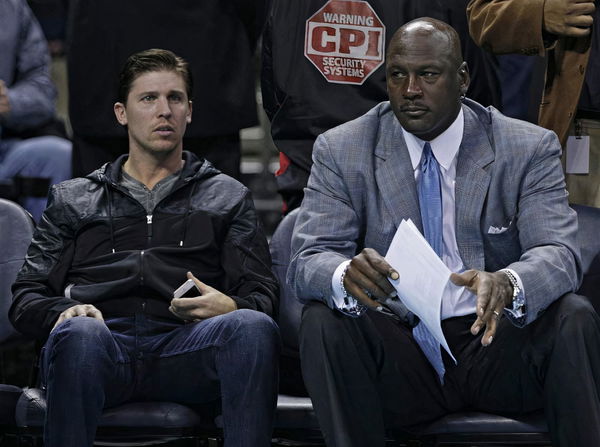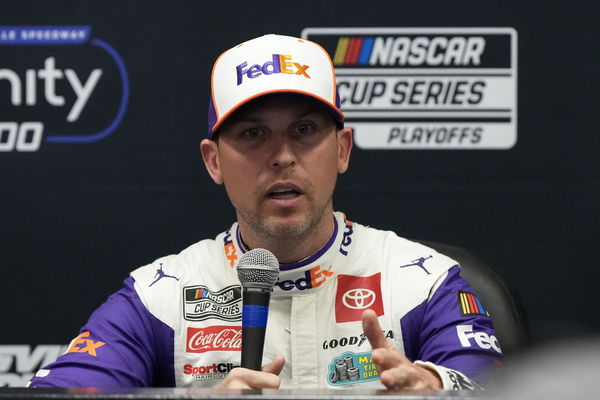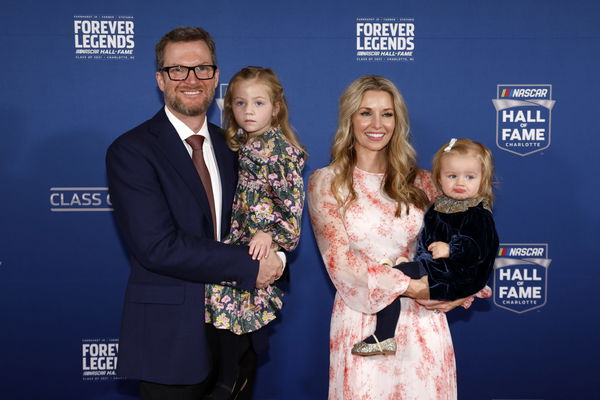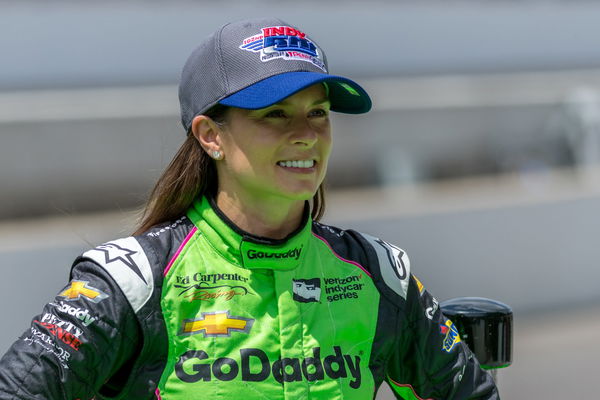NASCAR Officials Come Clean on Daytona Grass Patch Asphalt Repave With Surprising Revelation

Follow Us

via Imago
Daytona International Speedway plays host to the NASCAR, Motorsport, USA Cup Series for the Daytona 500 in Daytona Beach, FL, USA. Daytona Beach United States of America – ZUMAc04_ 20230219_zaf_c04_386 Copyright: xWalterxGxArcexSrxActionxSportsxPx
The talk around Ryan Preece‘s hair-raising crash at Daytona’s season finale was deafening. His #41 Ford took a wild ride, flipping over more than a dozen times before finally coming to a halt. Miraculously, Ryan Preece emerged from the wreckage unscathed and walked away, though he did spend a night in the hospital for a thorough once-over, just to play it safe.
This bone-chilling incident got the whole racing community talking, especially about why there’s a patch of grass right next to the track. The chatter was spearheaded by Denny Hamlin, with Kyle Busch, Kevin Harvick, Kenny Wallace, Dale Earnhardt Jr, and even NASCAR’s behind-the-scenes folks like Brett Griffin weighing in. This whole bunch of conversation has seemingly lit a fire under the powers that be, prompting them to take steps to prevent such heart-stopping moments in the future.
Is Daytona International Speedway getting a makeover?
ADVERTISEMENT
Article continues below this ad
Denny Hamlin kicked off a crucial conversation following Ryan Preece’s terrifying tumble at Daytona, where his car danced a dangerous ballet across the track. Hamlin pointed to the moment Preece’s ride leaped, thanks to the infamous “grassgate,” setting off a frightening series of flips.
Chiming in, Kyle Busch highlighted the hazards when speed meets grass, comparing a racing car’s aerodynamics to a “sheet of plywood” caught in the wind, questioning the logic of grassy run-offs. Kevin Harvick, from Tony Stewart’s camp, also sang from the same hymn sheet as Busch.
Diving deep, NASCAR reenacted the crash scene and pinpointed the road course’s bus stop chicane and the grassy backstretch as the culprits for the car’s lift-off and subsequent gymnastics. And it’s technical too: a NASCAR car hurtling at 180 mph packs the same punch as 2.2 lbs of TNT. That’s a colossal amount of energy to tame, mostly reined in by friction’s grip. Being spun out at that speed, mashing the brakes to a halt—it’s friction that plays hero—always pushing back, no matter which way you’re headed, and grass does not have that level of friction at all.
So, now the NASCAR plan is set to swap out three grassy patches for asphalt, one’s already done, and the other two are on the docket post-Daytona 500. “With the incident, we had with the 41 car at Daytona II, we have, you see in yellow there, re-asphalted that area,” Sawyer explained as per sportsnaut.com, shedding light on the decision-making and timing during a media briefing at their R&D hub. “Post Daytona 500, we will asphalt the green area.”
NASCAR officials on what went into the decision to repave more of Daytona’s backstretch and removing the bus stop rumble strips after investigating the Preece crashhttps://t.co/Hk8qk0wsoC
— Matt Weaver (@MattWeaverRA) January 28, 2024
“The reason is working within our off-season and with our friends at IMSA (for the Rolex 24). It will be done post-Daytona 500. As well as the rumble strips that are there on the bus stop today, they will be removed, as will the concrete pads, which will give us the opportunity to, similar to what we do at Circuit of the Americas, take different rumble strips and interchange them.”
Watch This Story: Joey Loganos Ford Fetches an Astounding 126k Bid as Winner Gets Ultimate Daytona 500 Surprise
“If we want to go flat in that area, we can do that. It gives us some options. It gives us a few cards to play with,” Sawyer added, hinting at a smoother future for that stretch. Moreover, NASCAR’s not stopping there; they’re already on the case, tackling the backstretch issues head-on to keep such heart-stoppers off other tracks as well.
Ryan Preece has had his fair share of heart-stopping moments on the track
ADVERTISEMENT
Article continues below this ad
Trending

Michael Jordans’ Entrepreneurial Drive Could Potentially Be the End of 23XI and Denny Hamlin’s Dream
May 02, 2024 10:39 AM EDT

Denny Hamlin Reveals the Harsh Reality That Awaits NASCAR At the End of 2024 – “We Just Wouldn’t Show up”
May 02, 2024 06:55 AM EDT

“That’s What Dale Earnhardt Did”—NASCAR Veteran Dissects Rick Hendrick’s Call to Commit Financially Behind HMS Star
May 01, 2024 04:48 AM EDT

Sister Kelley & Jordan Fish React as Dale Jr’s Wife Sends Heart-melting Message on Their Daughter’s Special Day
May 01, 2024 09:05 PM EDT

6 Years After Retiring, Danica Patrick Hops Behind the Wheel and Fans Can’t Get Enough
April 29, 2024 06:43 PM EDT
Get instantly notified of the hottest NASCAR stories via Google! Click on Follow Us and Tap the Blue Star.

Follow Us
Last April at Talladega, things got hairy when Ross Chastain decided to carve out a third lane, setting off a chain reaction. His car ricocheted off Noah Gragson, who was sent packing into the wall, igniting the chaos. Kyle Larson found himself skidding on the grass, only to be hurled back into the fray and into the path of Preece, whose helmet visor flew open upon impact.
“It was probably one of the toughest hits I’ve ever taken in a race car, and I’ve hit walls with hung throttles on concrete, concrete walls with dirt behind them,” Preece shared until Daytona turned the tables yet again.
But Sawyer’s on that as well, saying, “In general, we’ve had conversations over time about grassy areas. Talladega on the backstretch was an area that we’ve looked at. John Patalak and his team worked extensively on that.”
ADVERTISEMENT
Article continues below this ad

Dwayne Johnson Set to Serve as the Grand Marshal for Daytona 500
He shed some light on how the rumble strips played a role, something they picked up from the car data during the Daytona crash analysis. He delved into the nitty-gritty of their findings – how grass, rather than slowing things down, tends to make a car that’s airborne flip more fiercely. “We put all those together to reach this decision.”
Edited by:

Shivali Nathta
